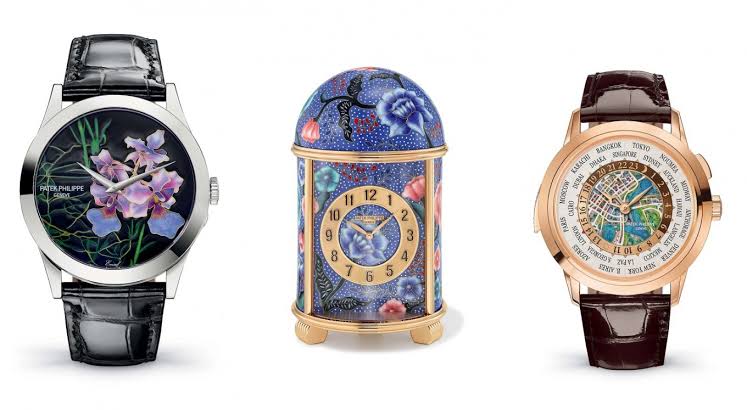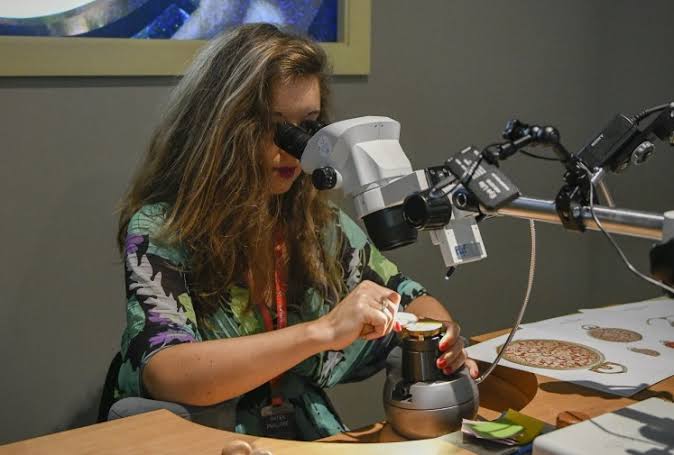Popular Reads
Top Results
Can't find what you're looking for?
View all search resultsPopular Reads
Top Results
Can't find what you're looking for?
View all search resultsDiscovering 180 years of haute horology history
In its largest exhibition ever, Swiss luxury watch manufacturer Patek Philippe reveals its classics, as well as its latest creations, with some taking inspiration from Southeast Asia.
Change text size
Gift Premium Articles
to Anyone
W
atch manufacturer Patek Philippe invited journalists from around the world, including The Jakarta Post, to experience the Patek Philippe Watch Art Grand Exhibition 2019 in Singapore. The following is a report on the event.
In an era where a smartwatch can double as a computer on your wrist, it’s hard to see the appeal of a mechanical watch as a regular person increasingly connected to the web.
Yet despite the ravages of time and technology, mechanical watches seem to be here to stay, and the art of watchmaking seems to be alive and kicking.
Patek Philippe, as one of the world’s premier watch manufacturers, certainly intends to maintain interest in mechanical watches through its biennial Watch Art Grand Exhibition, where members of the public can discover an impressive range of Patek Philippe watches and clocks.
This year, the Watch Art Grand Exhibition is taking place for the first time in Asia.
Visitors can take a close look at both historical and recent models and interact with Patek Philippe artisan watchmakers in Singapore from Sept. 28 to Oct. 13. Occupying a 1,800-square-meter space at the Sands Theatre of Marina Bay Sands, the exhibition is the largest Patek Philippe has held so far.
Visitors can make their way through 10 theme rooms, beginning with the cinema playing a brief history of Patek Philippe, from Polish watchmaker Antoine Norbert de Patek and Frenchman Adrien Philippe’s beginnings to the present day company as owned by the Stern family since 1932.
Various newly released models are on display in the Current Collection room, the interior of which takes inspiration from Patek Philippe salons on Geneva’s Rue du Rhône.
Continuing to the Napoleon Room, visitors are presented with limited special editions created specifically for the Southeast Asian market, set to a motion-picture backdrop of Lake Geneva beamed through several screens to better channel the Swiss heritage.
The Museum Room, as the name implies, presents classic timepieces, with some dating back to the mid-16thcentury.
The oldest piece in the room is the “Compass Rose”, attributed to watchmaker Caspar Werner of Nuremberg, Germany, from 1548. There is also Antoine Norbert de Patek’s pocket watch from the company’s founding in 1839; and the first Patek Philippe wristwatch – a ladies’ wristwatch dating back to 1868.
In the next room, Patek Philippe showcases its Rare Handcrafts line, which is frequently one-offs featuring exceptional artistry such as marquetry and enameling.
A nod to Indonesia was present through several dome clocks depicting batik patterns, sculpted by hand using flat gold wire and meticulously painted with numerous enamel paint colors.
Three dome clocks were inspired by batik, with the blue and red pieces noting the traditional Indonesian fabric, while the black dome clock took inspiration from the Malaysian sarong.
To better see the process of creating the Rare Handcrafts line, visitors can make their way to the adjacent Watchmakers Room, where they can witness artisans working on three main techniques vital to Patek Philippe: engraving, enameling and marquetry.
Another intriguing section is the Grand Complications Room, which showcases Patek Philippe’s most complicated timepieces. If you want to better understand how a watch works, you can take the virtual reality experience and go inside the movements in the Interactive Room.
The last room in the exhibition is the Singapore and Southeast Asia Room, highlighting Singapore’s 200th anniversary and the Southeast Asian heritage through timepieces paying tribute to neighboring countries like Thailand and Indonesia.
Patek Philippe president Thierry Stern said the Watch Art Grand Exhibition’s focus in Asia was attributed to the high number of collectors and client base, with Singapore being a hub for the manufacturer for years.
“This is for me the main area, which was also the easiest to organize for the whole Southeast Asia,” Stern told The Jakarta Post, acknowledging the easy logistics along with established relations with retailers and clients in the area.
Meticulous: Mechanical watchmaking is alive and well, although artisans are in short supply. (Patek Philippe/-)He also noted that events like the exhibition could foster the interest of younger generations in fine timepieces and the Patek Philippe brand.
“I’ve seen a lot of young kids really enjoying watches. They are interested, and [it’s a matter of] how you can ‘seduce’ them, maybe through creating new products. You should adapt yourself, but not forget the [heritage].”













